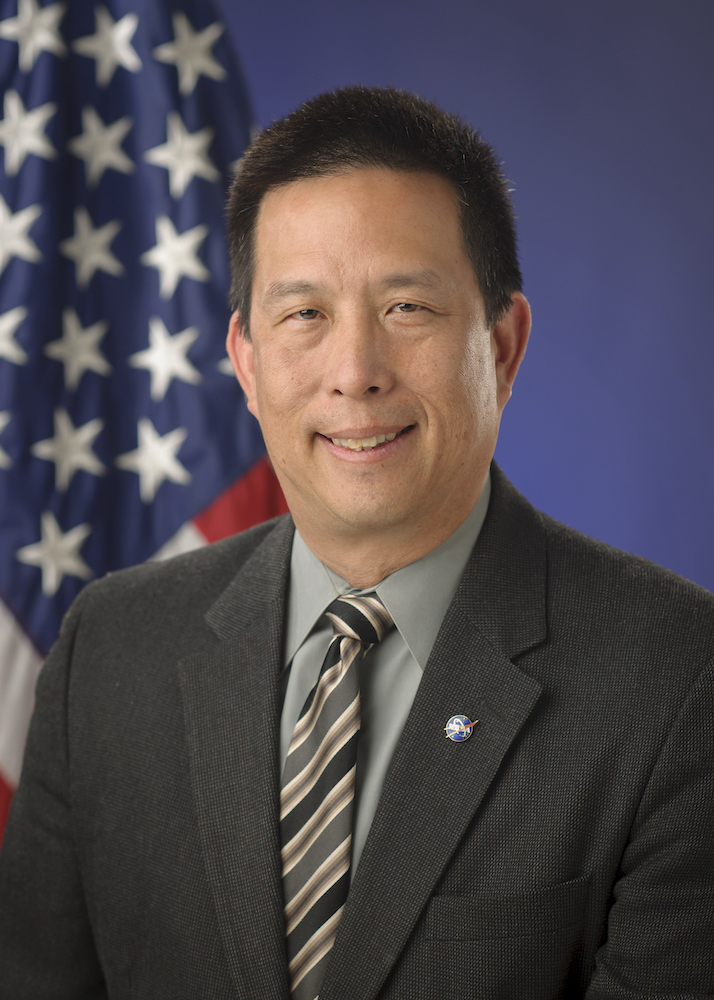
Eugene Tu
Center Director
NASA Ames Research Center
Dr. Eugene L. Tu is the center director at NASA’s Ames Research Center in California’s Silicon Valley, where he leads a staff of civil servants and contractors in providing critical research and development support that makes the aeronautics and space missions of NASA and the nation possible.
Tu was most recently director of Exploration Technology at Ames, a position he held from November 2005 until his selection as Ames center director in May 2015. There he led four technology research and development divisions, including two of NASA’s critical infrastructure assets: the consolidated arc jet testing complex and the agency’s primary supercomputing facility.
Tu began his career as a research scientist conducting computational fluid dynamics research on the steady and unsteady aerodynamics of complex aircraft configurations. After progressing through various research and managerial positions in such fields as computational aerodynamics, information technology, or IT, and high performance computing and communications, he was selected as the deputy program manager for the agency’s IT Base Research program in 1997. In 1998, he was selected as the program manager for the agency-level High Performance Computing and Communications, or HPCC, program and concurrently led both the IT Base Research and HPCC programs. In 2001, the two programs were combined into the Computing, Information, and Communication Technology, or CICT, program and Tu was selected as the CICT program manager. In 2002, he was selected into the Senior Executive Service Candidate Development Program, SESCDP, and served in the Office of Biological and Physical Research at NASA Headquarters in 2003, and as the acting director for the Information Sciences and Technology Directorate at Ames in 2004. After receiving his SES certification in 2005, he was selected as the director of Exploration Technology at Ames.
Tu earned his bachelor’s degree in mechanical engineering from the University of California, Berkeley, in 1988, and both his master’s degree and doctorate in aeronautics and astronautics from Stanford University in 1990 and 1996, respectively. He is an associate fellow of the American Institute of Aeronautics and Astronautics. Tu received the NASA Outstanding Leadership Medal in 2000, and the Presidential Rank Awards for Meritorious Executive and Distinguished Executive in 2009 and 2020, respectively. Tu lives in Fremont, California, with his wife Kathy and three children. His hobbies include attending sporting events, traveling, and motorsports.
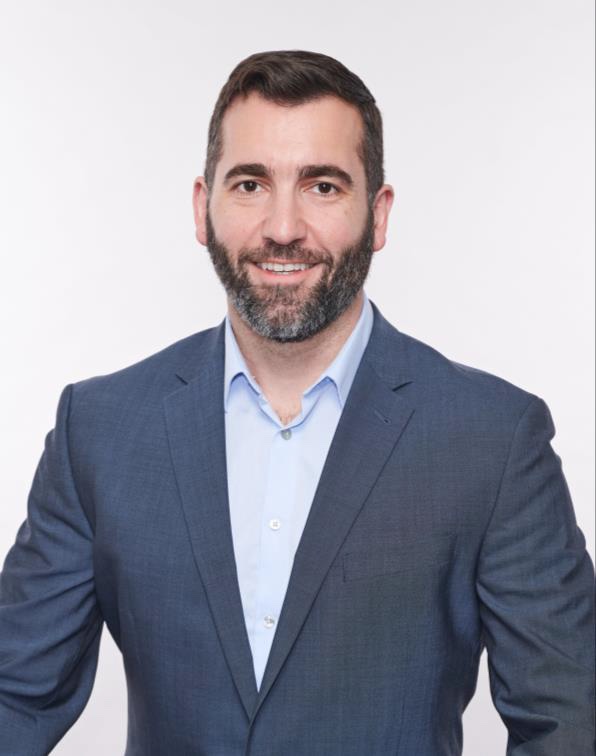
Jason Aspiotis
Director, In-Space Infrastructure and Logistics
Axiom Space
Axiom Station and the World’s 1st Orbital Data Center
Axiom Space is building the world’s first commercial space station – Axiom Station – with the first module to be attached to the ISS in 2026. Axiom Station is being developed to address existing and future markets in human spaceflight, government research programs in LEO, in-space manufacturing, and advanced in-space infrastructure and logistics capabilities, including scalable, cloud-enabled, and cybersecure orbital data center infrastructure. As economic activities and space-based networking continue to grow in Earth’s orbit, Axiom Space recognizes the importance of in-space computing infrastructure as integral to the advancement of space-based communications, cybersecurity, and AI/ML-enabled operations. Moreover, as humanity expands its activities beyond Earth’s orbit, in-situ cloud computing provides the necessary data infrastructure backbone as we return to the Moon to stay, and endeavor further to explore Mars and the rest of the solar system.
About the speaker
Jason leads Axiom Space's strategy and services development in national security, orbital data infrastructure, Space mobility and logistics (SML), and in-Space servicing, assembly, and manufacturing (ISAM). Jason has 20+ years of experience in technical, organizational and project leadership, R&D, systems engineering, strategy, finance, and business development in the Space, defense, and financial technology industries. Prior to Axiom Space he was CEO of Finsophy, a Senior Associate at Booz Allen Hamilton, and a Chief Engineer at Raytheon. He has BS degrees in Physics and Astrophysics, a MS in Applied Physics, and a MS in Engineering Management.
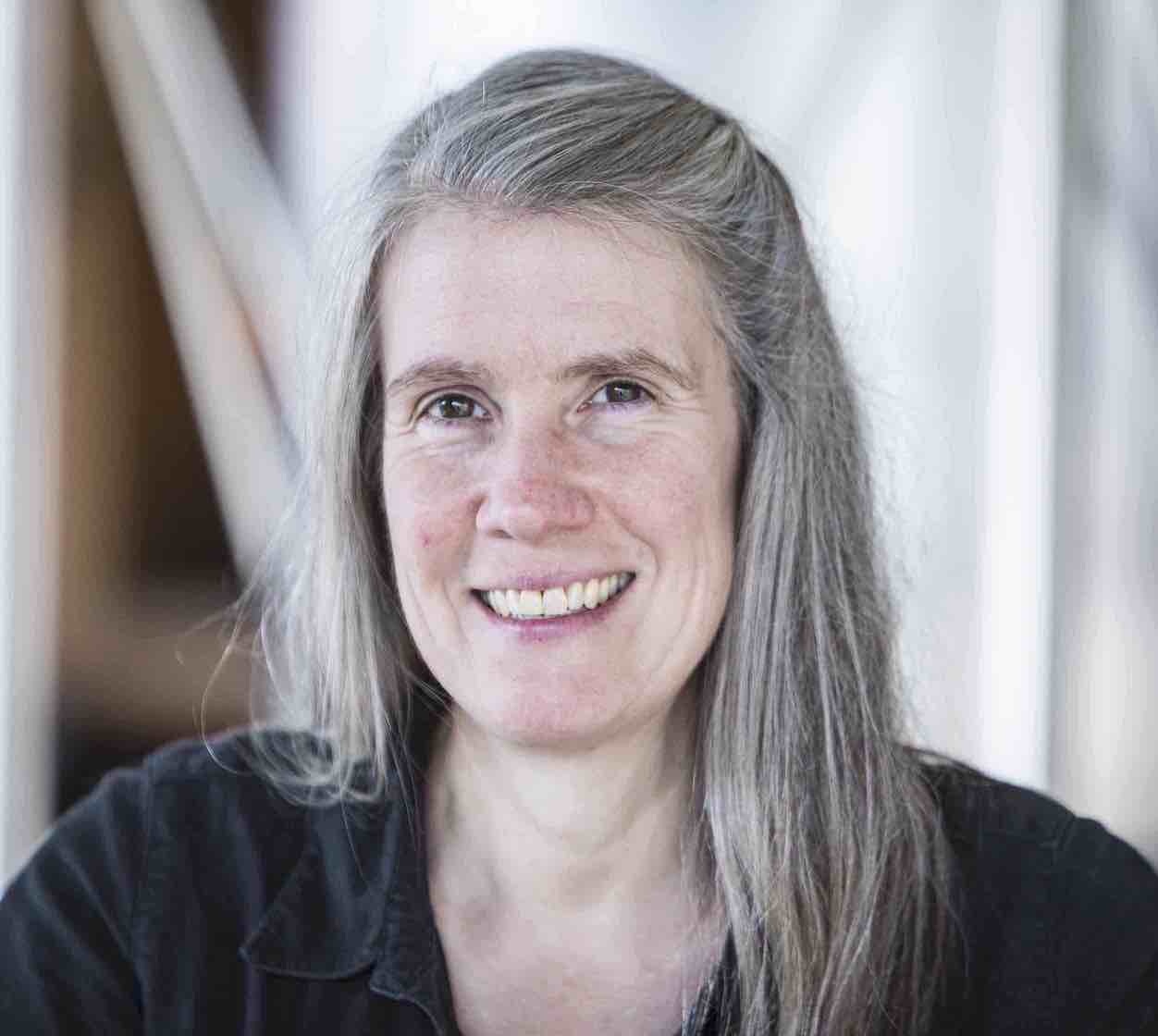
Elizabeth Turtle
Planetary Scientist
Johns Hopkins Applied Physics Laboratory
Dr. Elizabeth (Zibi) Turtle is a planetary scientist at the Johns Hopkins Applied Physics Laboratory. She is the Principal Investigator for the Dragonfly New Frontiers mission to Titan and for the Europa Imaging System (EIS) cameras on the Europa Clipper mission. She also participated in the Galileo, Cassini, and Lunar Reconnaissance Orbiter missions. Dr. Turtle's research has focused on combining remote-sensing observations with numerical geophysical models to study geological structures and their implications for planetary surfaces, interiors, and evolution, including: tectonics and impact cratering on terrestrial planets and outer planet satellites, the thickness of Europa's ice shell, the formation of Io's mountains, and the nature of Titan's landscape and weather. She earned her PhD in Planetary Sciences from the University of Arizona, Tucson, and her BS in Physics from the Massachusetts Institute of Technology. In 2021, she was awarded the Claudia J. Alexander Prize by the American Astronomical Society Division for Planetary Sciences.
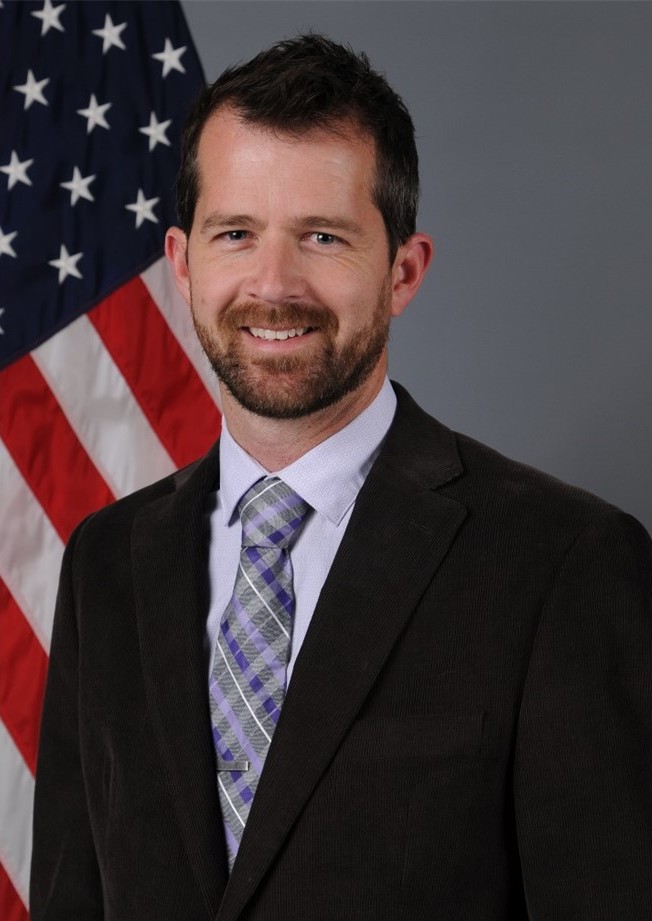
Jesse Mee
Air Force Research Laboratory
Dr. Jesse Mee is a member of the scientific and technical cadre of senior executives, and the Senior Scientist for Radiation Hardening Technologies, Air Force Research Laboratory, Air Force Materiel Command, Kirtland Air Force Base, New Mexico. He serves as the principal scientific authority and independent researcher in the field of radiation effects and mitigation technologies. Dr. Mee initiates, plans, coordinates, and evaluates research and development efforts across the AFRL enterprise to deliver high-assurance, strategic rad-hard, rad-hard, and rad-tolerant electronics that must operate in natural space and high-altitude nuclear detonation environments.
Dr. Mee has been leading foundational research, advanced technology development and radiation-effects studies in commercial and rad-hard electronic technologies for over 15 years. He is known for his leadership of the AFRL Space Electronics Program, where he planned and directed over $540 million in RH electronics investments between 2016 and 2023. In this capacity, Dr. Mee worked closely with partner DoD, civil space and industry organizations to secure funding for these efforts, and facilitating transition of critical RH technology into defense, intelligence and civil space systems.
Dr. Mee’s government career began in 2008 at AFRL were he designed and executed radiation tests for advanced RH electronics. Afterward, he shifted his attention to reliability issues—specifically the study of negative bias temperature instability and hot-carrier injection failure mechanisms in Metal-Oxide-Semiconductor Field-Effect Transistors. His primary contribution was in the development of a novel experimental methodology that led to an increased understanding of the physical mechanisms underlying the NBTI phenomenon. Dr. Mee then embarked on a multi-year detailed investigation of quantum dot mode locked lasers for high-speed intra-satellite data transmission. He authored several foundational publications including the first to demonstrate greater than 100-degree Celsius operation of a QD MLL, the first to explain puzzling output behavior in a QD MLL at elevated temperature and a theoretical QD MLL design to produce a narrower pulse shape and increase the potential data rate for communication applications. Dr. Mee later founded the Spacecraft Processing Architectures and Computing Environment Research lab to study optimized pairing of mission application codes with various space computing hardware architectures. The lab has since grown to over 15 scientists and engineers who have collectively produced 27 publications since 2014. He is author and co-author of more than 40 journal and conference articles, and has served on multiple external advisory boards, independent product teams and RH conference planning and steering committees.
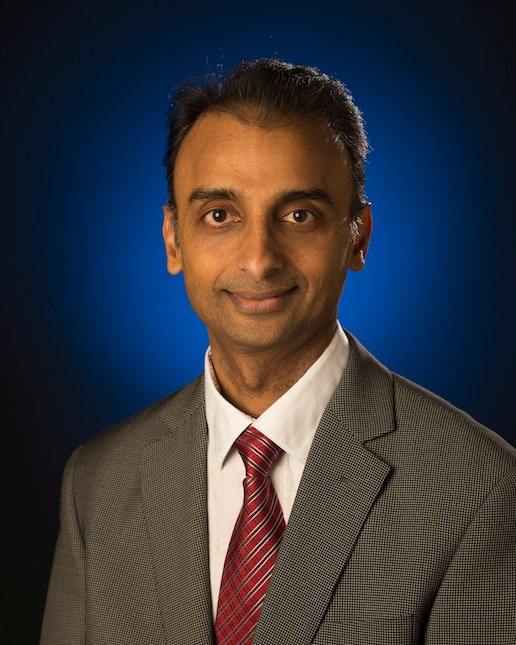
Prasun Desai
Deputy Associate Administrator, Space Technology Mission Directorate
NASA HQ
Dr. Prasun Desai serves as the Deputy Associate Administrator of the Space Technology Mission Directorate (STMD). In this role, Dr. Desai supports executive leadership, overall strategic planning and direction, and effective management for all elements of the Space Technology Programs executed under STMD’s $1.2 billion budget. He helps plan, direct, coordinate, and evaluate the full range of Space Technology programs and activities including budget formulation and execution, and represents the program to appropriate officials within and outside the Agency. Dr. Desai allocates and reprograms STMD resources as required to meet approved objectives and ensures that sound management and engineering practices are followed in the implementation of STMD Programs and Projects to ensure their safety and success, and to ensure that commitments are met. In this role, he also supports the development of overall NASA planning, policy development, and program integration activities.
Dr. Desai has worked at NASA for 33 years. For the past 13 years, he has helped to establish the Space Technology Mission Directorate from inception at NASA Headquarters for development of next-generation space technologies and capabilities. Prior to that, he spent 20 years at NASA Langley Research Center as a senior systems engineer applying expertise in the fields of atmospheric flight dynamics, systems optimization, engineering of entry systems, flight operations, and design of planetary exploration mission elements for robotic and human systems. Dr. Desai has contributed to the design, development, analyses, and flight operations of many NASA missions (Mars Exploration Rover, Stardust, Genesis, Mars Phoenix Lander) pertaining to entry, descent, and landing of probes at Mars and Earth.
Dr. Desai has received numerous awards from NASA for his contributions, including two Exceptional Engineering Achievement medals; an Exceptional Achievement medal, Outstanding Leadership Medal; a Presidential Rank Award; and an Exceptional Service Medal for his significant contributions throughout his NASA career. He also received the 2005 National Engineer of the Year Award from American Institute of Aeronautics and Astronautics (AIAA).
Dr. Desai has a B.S. in Mechanical Engineering from Rutgers University, an M.S. in Astronautics from the George Washington University, and a Ph.D. in Aerospace Engineering from the University of Illinois. He is an Associate Fellow of the American Institute of Aeronautics and Astronautics, and has authored or co-authored over 60 technical publications. Desai is also a prolific speaker, having given presentations to schools (K-12), universities (domestically and internationally), civic groups, professional organizations, and the general public to promote science education and science literacy and to motive students for careers in math and science. He was the NASA Langley Research Center’s “Speaker of the Year” in 2008, 2009, 2011, and was inducted in the NASA Langley Speaker Hall of Fame in 2012.
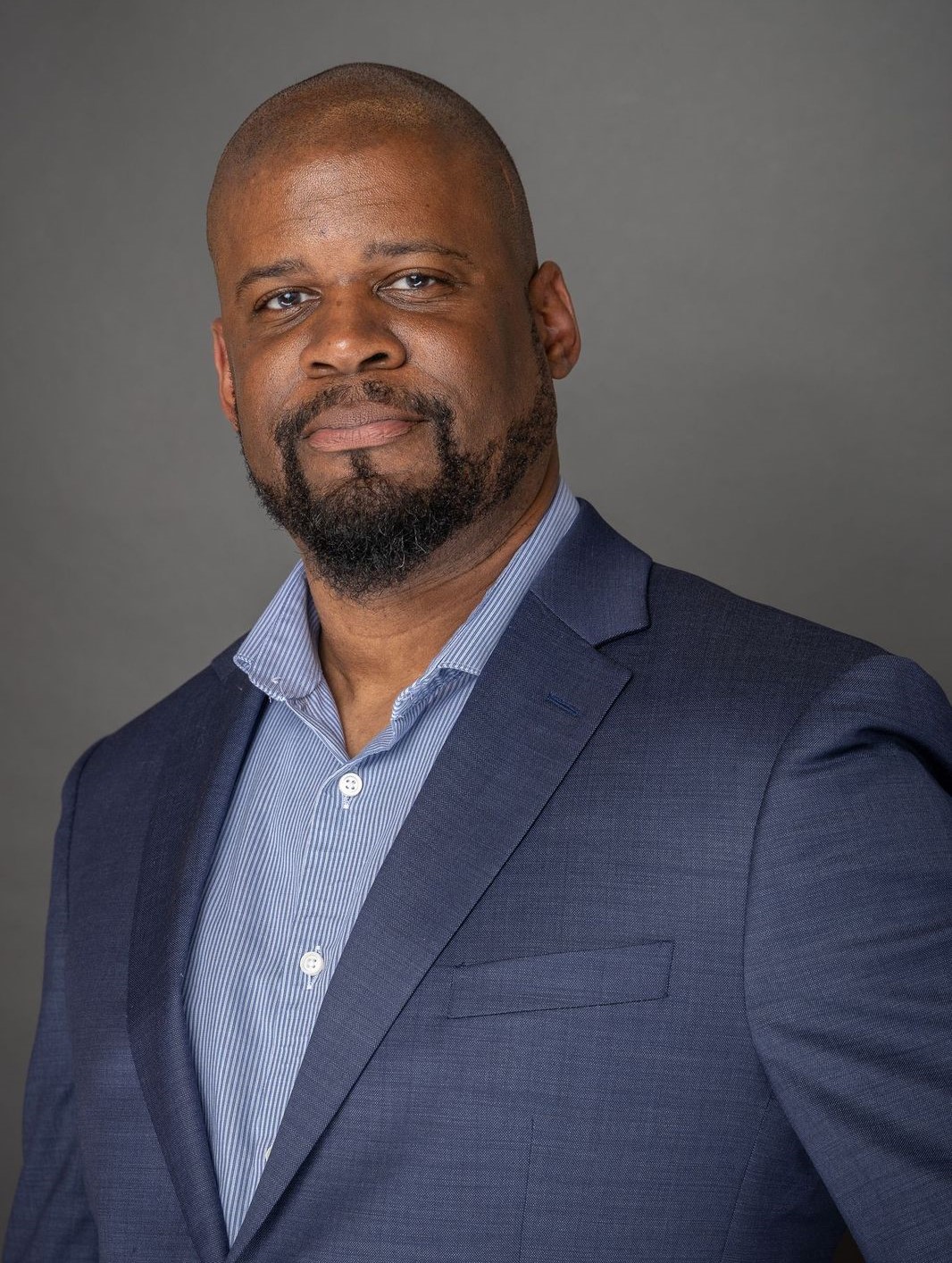
Damon Bradley
Founder and President
DeepSpace Technologies
Dr. Bradley is the founder and president of DeepSpace technologies, Inc. a small minority-owned business based in Columbia, Maryland, USA that develops scientific instruments and signal processing algorithms for Earth, interplanetary, and heliophysics remote sensing, high performance computing and algorithm hardware acceleration research, and cryogenic detector readout and control systems for astrophysics telescopes. Dr. Bradley developed two radio science currently in space - The Soil Moisture Active Passive (SMAP) L-Band microwave radiometer digital electronics, and the first Lunar radio telescope as a payload onboard the first-ever commercial lunar lander developed in the United States - Radio wave Observations at the Lunar Surface of the photoElectron Sheath (ROLSES). In addition, Dr. Bradley works with a cohort of researchers from NASA and Auburn University on the study of interstellar dust in the solar system and its impacts on space assets.
Dr. Bradley started DeepSpace Technologies, Inc. in 2021 after an illustrious 20-year career at NASA Goddard Space Flight Center, inventing digital signal processing systems for space exploration, heliophysics, astrophysics, and Earth science. While at NASA, he served as a branch head, founder of the DSP technology group, and an innovator winning approximately $10 million in new funding for various R&D programs in the areas of radio spectrometry, smallsat instrumentation, and planetary exploration. In addition to scientific research, he managed over 30 projects valued over $100 million with a staff of 74 personnel while branch head in his last 3 years at NASA. Dr. Bradley holds a patent as an inventor of the software-defined-radiometer (patent #10768213) and has developed spectral radio signal processing systems for Earth, Lunar, and Saturn-exploration applications.
Dr. Bradley earned his bachelor’s degree in electrical engineering from the Pennsylvania State University in 2002, his master’s degree from the University of Maryland College Park in 2005, and his PhD at the University of Maryland Baltimore County in 2014, where he specialized in digital signal processing, information theory, machine learning, high performance computing and radio-frequency signal processing He is also the founder of the National Society of Black Engineers - Greenbelt Space Chapter, a member of the Institute of Electrical and Electronics Engineers for over 20 years, and adjunct professor of Electrical Engineering at the University of Maryland, Baltimore County where he’s volunteered on the committees of over a dozen PhD graduate students and taught digital signal processing. Dr. Bradley also served as an instructor for the Google-sponsored Executive Leadership Council in 2020 and 2021, and a signal processing consultant for small businesses that have done work for the Department of the Navy and Army.
Dr. Bradley is the two-time recipient of the Robert. H. Goddard award at NASA, once in 2010 for Outstanding Achievement in Leadership and again 2015 Engineering Team Award for the Soil Moisture Active Passive Radiometer. He is also the 2020 recipient of the NASA Applied Engineering Directorate First Line Supervisor Leadership Award and the 2014 Applied Engineering Technology Directorate Win New Work Award for his efforts leading new research from his 3-member digital signal processing technology group that he founded in 2008. Dr. Bradley’s hobbies include hiking, nature photography, and the cultural and historical anthropology of electronic dance music. Dr. Bradley is an internationally-acclaimed electronic music touring DJ, former events promoter, and community organizer, with a passionate focus on techno, trance, house, and ambient music.
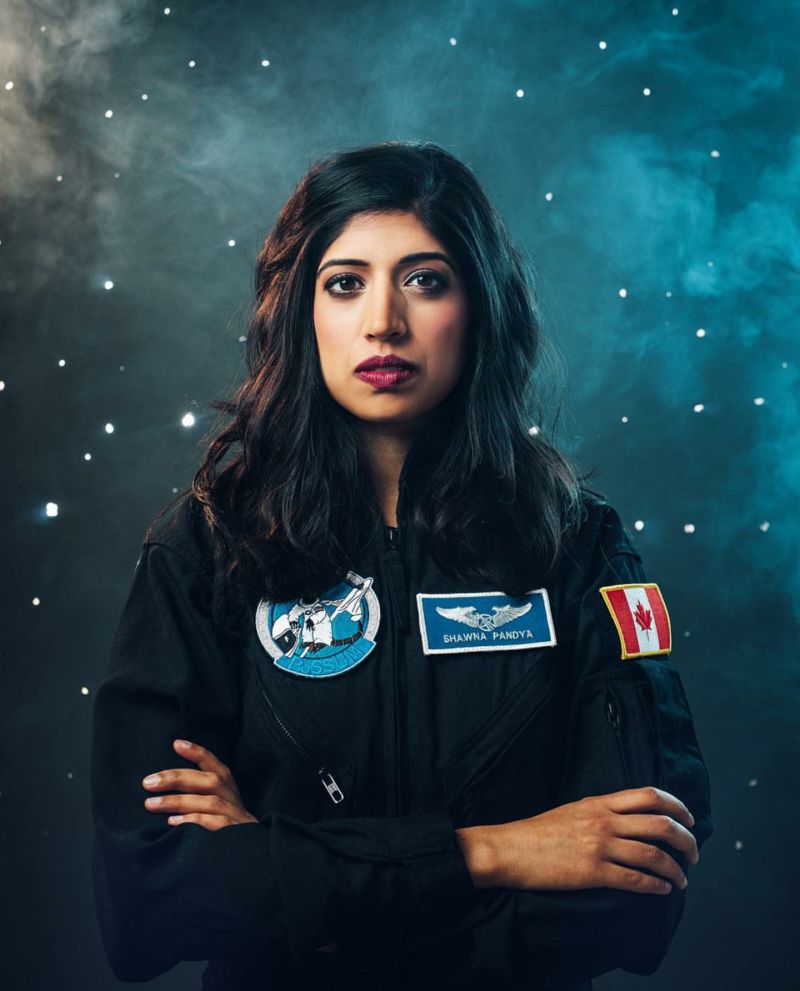
Shawna Pandya
Astronaut and Director, Space Medicine Group
International Institute for Astronautical Sciences
Medical doctor Dr. Shawna Pandya is a newly named astronaut with the International Institute for Astronautical Sciences (IIAS) and Director of IIAS' Space Medicine Group. She is a two-time aquanaut with the NEPTUNE and NEP2NE missions, and was a scientific lead on the first IIAS suborbital research flight. In 2024, she was inducted as a full member of the International Astronautical Federation's Human Spaceflight Committee, became an aeromedical flight physician, and named a Karman Pioneer. Dr. Pandya also received the Explorers' Club's 2022 “50 Explorers Changing the World." Her work has been profiled by Nature Careers and the Royal Canadian Mint.
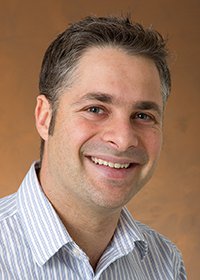
Kalind Carpenter
Robotics Engineer, Advanced Robotic Systems Group
NASA Jet Propulsion Laboratory
Kalind is a Robotics Engineer in the robotic Advanced Robotic Systems group (347Z). The lab he has helped create focuses on rapid technology development, autonomous systems, end effectors, and extreme access technologies.
Physical limitations kept Kalind from pursuing a career as an astronaut and inspired him to work on prosthetics which was his gateway into robotics.
He is currently a lead on a lunar drone concept and helping to coordinate a desert rats/JPL demo. He is also leading the anchoring development for the Large Crater Radio Telescope, TLS integration into CADRE class rovers, and Supernumerary arm development with MIT. His latest work includes the sample tube gripper lead for the Sample Recovery Helicopter. Kalind is the inventor and was the Principal Investigator of the Exobiology Extant Life Surveyor (EELS), an adaptable mobility capability aimed to traverse through the plume vent crevasses on Enceladus to reach the ocean below the ice.
Previous work includes principle investigator (PI) of an autonomous swarm of robots with ground penetrating radar to map the changes in sub glacial topology in Greenland and Antarctica created by ocean currents. PI of an ultra-compact low power gas sensor for small ground and aerial robots as well as Micro/nanofabrication of bulk metallic glass via thermoplastic forming. Co-Investigator (Co-I) on the Pop-Up Flat Folding Explorer Robot (PUFFER). Co-I on a tensegrity lander for icy moons. PI on a Vent and Crack mobility platform for descending Enceladus vents. Mobility engineer for various Ocean Worlds Mobility Solutions such as Cryosiman and Sublimation anchors and grippers.
His early projects include lead of the mobility for the gossamer rover under the Ocean Worlds Mobility Study. A micro ground vehicles task designing wall climbing robots that utilize microspines, electrostatic and Gecko adhesive to climb vertical surfaces. PI on the variable radius wheel. Initial lead engineer on the Cam Hand for Robosimian. Lead engineer on the initial gripping sub assembly of the asteroid gripper for the asteroid rendezvous and redirect mission. Mobility consultant and field engineer for Volcanobot.
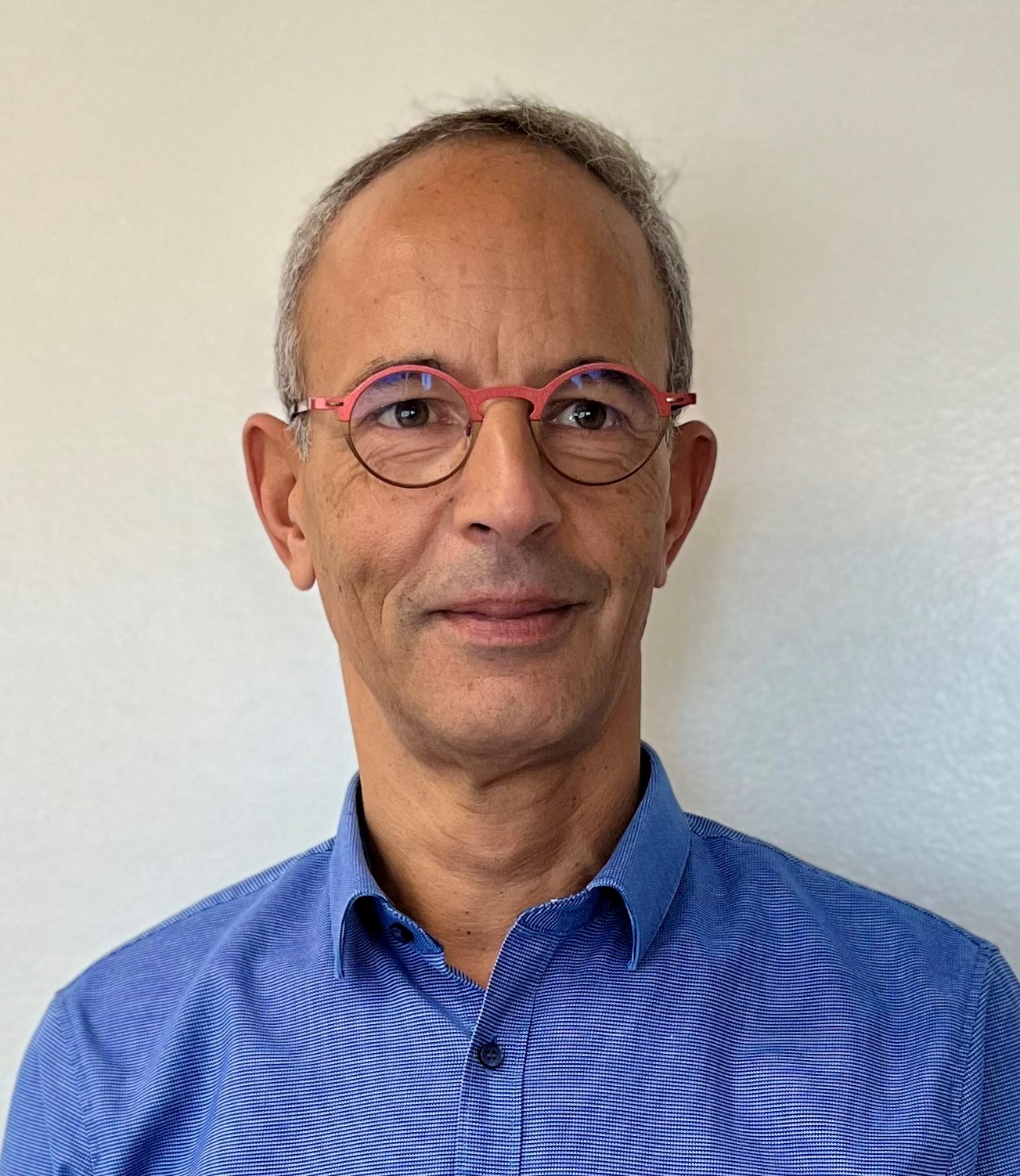
Stephane Ghiste
Deputy Manager, Fly! Feasibility Study
European Space Agency
Stephane Ghiste has extensive experience in human spaceflight management and operations. Since June 2022, he has served as the European Space Agency (ESA) Liaison Officer at the ESA Houston Office/NASA Johnson Space Center. In this role, he coordinates between ESA, NASA, and US-based industry on Exploration Programs and represents ESA in various reviews and working groups. Additionally, he acts as the Deputy Manager of the Fly! Feasibility Study, a groundbreaking project aimed at flying an astronaut with a disability on a long-duration mission aboard the International Space Station.
Previously, he held the position of Management & Operations Support Officer at the European Astronaut Centre in Cologne, Germany. There, he supported the Low Earth Orbit Exploration Group and managed multidisciplinary teams, including the ESA Astronaut Direct Return Operations Team. In 2022, he initiated the Fly! Feasibility Study, a project dedicated to assessing the technical, medical, and operational considerations for flying an ESA astronaut with a physical disability. He was also a member of the 2022 ESA Astronaut Selection Panel, where he helped define the selection criteria for the latest astronaut selection campaign.
From 2013 to 2018, Stephane led the Mission Independent Training Unit at ESA, where he managed the ESA Astronaut Basic Training and Pre-Assignment Training phases, and developed astronaut training curricula for various ISS training stages.
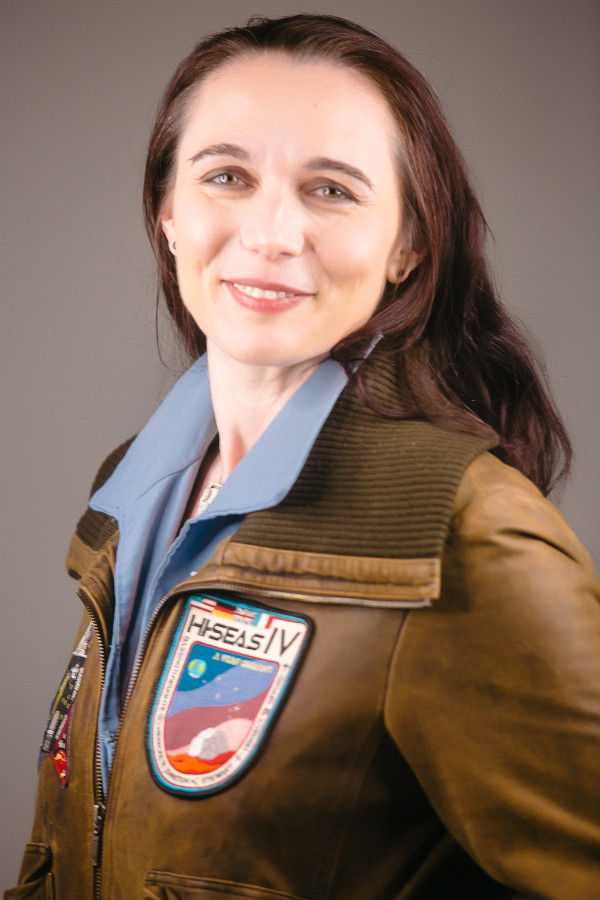
Sheyna Gifford
Associate Professor of Orthopedics and Rehabilitation Physician
St. Louis University School of Medicine
Dr. Sheyna Gifford (MD, MPH, MBA, MS, MA) is an Associate Professor of Orthopedics and a Rehabilitation Physician; a flight surgeon for parastronauts, military aircrews and the civilian pilots; an aerospace and medical researcher; and a simulated astronaut. She is a captain in the US Air Force Reserve, a STEM educator, and professional science communicator. She’s spent 380 days in simulated space and was the head of Medical Operations for AstroAccess, promoting disability inclusion in human space exploration and paving the way for all humankind to go to space.
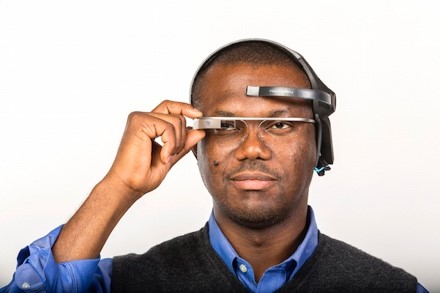
Zuby Onwuta
Founder
Think and Zoom
Zuby Onwuta is a Harvard-MIT trained innovator, US President Obama Presidential Service Award recipient, serial patented inventor, global UN Speaker, software engineer, US military veteran and solutions architect. Legal blindness Disability ended his medical studies and US military career, which forced him into studying engineering. While at UIC Engineering, Zuby helped pioneer Smart Home automation by creating a solution that helped homeowners to control home doors, utilities, and appliances remotely. Zuby worked as a software engineer in corporate America for 15 years, helping Fortune 500 companies. At Lucent (Nokia), as a full stack web developer, he deployed web applications that helped the pricing team in providing uniform pricing for the firm’s multi million dollar clients. At Goldman Sachs, Zuby designed, architected, and wrote a real-time software application, that calculated, stored, reported, and securely archived over $50 Billion of annual electronic stock trades. At IBM, as a Global Technology Leader, he led interdisciplinary and cross functional teams in US, Europe, and Asia, in resolving highly critical technical problems for multi-billion-dollar clients like NASA, The White House, and Boeing. Zuby is the founder of a biotech startup called Think and Zoom, under which he invented and patented “Brain Control for Blind Assistive Tech” and helped pioneer the field of “Assistive NeuroTechnology for the blind and visually impaired”. Think and Zoom received recognition from Apple, for creating “Kenti” the first Brain Control Game featured at Apple WWDC Developer Conference, and awards from Mass Challenge, and Singularity University. Zuby was awarded the US Presidential Service Award by President Obama for his mentorship of innovation-minded STEM students across the world. As a global speaker, Zuby has spoken at TEDx, in 5 countries including UN, Geneva, Switzerland, appeared at the US Congress, and his work as a disabled Astronaut in Training has been featured in global publications like BBC and NY Times. Zuby’s educational background includes pre-med, B.Sc. in Computer Engineering, Innovation training in Technology, Business, Entrepreneurship and Healthcare from MIT, Harvard Business, NSF and Harvard Medical School respectively, and recently, Venture Capital training from Harvard Business Executive.
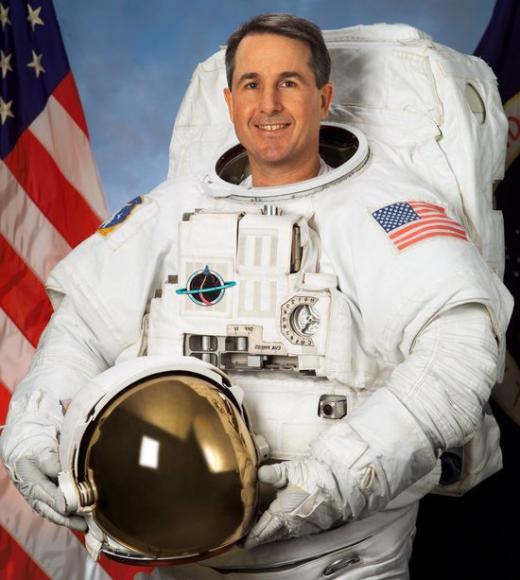
Stephen K. Robinson
Director, Center for Spaceflight Research
University of California, Davis
Before joining the faculty at the University of California, Davis in 2012, Stephen Robinson spent 37 years at NASA, where he worked as a technician, engineer, research scientist, pilot, and astronaut. Robinson is now a tenured professor in the UC Davis Mechanical and Aerospace Engineering Department and serves as the Director of the UC Davis Center for Spaceflight Research, where graduate and undergraduate students pursue research in human spaceflight, AI-based spacecraft autonomy, spacecraft design for human safety, human/autonomy/robotic integration, human performance, lunar surface operations, and CubeSat and UAV design.
During his 17 years as a NASA Astronaut, Dr. Robinson flew on four space shuttle missions, performed three spacewalks, visited the ISS twice, and trained in Star City, Russia. He has extensive research expertise in spacecraft systems, human/systems teaming, operational safety, space robotics, autonomous systems, experiment design, aerodynamics, and computational turbulence physics. Dr. Robinson's engineering degrees are from UC Davis (double BS) and Stanford (MS & PhD), with additional academic research at Princeton and MIT.
Dr. Robinson is an active pilot, an artist, and a multi-instrument musician - he currently plays with the mostly-astronaut folk-music band Bandella, and the all-astronaut rock band Max Q.


